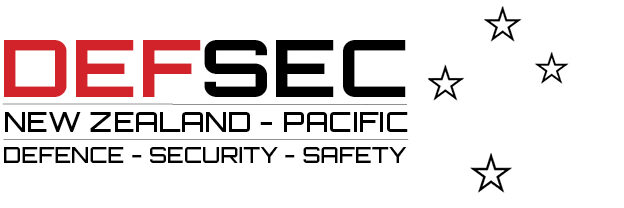
Released in April, the International Security Ligue’s Global Security Barometer 2025 reveals changes necessary for the security industry to meet future challenges in an evolving threat environment.
A survey of top executives at the world’s leading security services companies, the results of the Global Security Barometer 2025 (GSB 2025) suggest an urgent need for improved integration of security functions, heightened risk awareness, better critical infrastructure preparedness, and stronger security cultures across regions.
According to the study, leading security executives, for example, believe that the world’s critical infrastructure is only half as prepared as it needs to be against terrorism and high-consequence threats.
The study also sheds light on critical challenges facing the global security services industry, highlighting issues around public perception, regulation, labour markets, marketplace maturity, and cooperation with public law enforcement. According to the International Security Ligue, this highlights a crisis in security markets where cost often trumps quality in procurement decisions.
“Many of these challenges have plagued the industry for decades, which is exactly why the Ligue has undertaken this effort to examine them, to see what progress we have made, to identify work that still needs to be done, and to reconvene top minds in the industry to chart a path forward,” said the Ligue’s Director General Stefan Huber.
A call for unified action
Among its conclusions, GSB 2025 emphasises that strengthening global security in an increasingly complex threat landscape requires a unified, strategic approach that leaves no weak links:
- Organisations must adopt comprehensive risk management strategies, break down internal silos, and foster a proactive security culture.
- Governments should develop supportive regulatory frameworks, broaden definitions of critical infrastructure, and foster cross-border cooperation.
- Private Sector needs to invest in advanced security solutions, train personnel to handle multi-dimensional threats, and build trust within communities.
“Security isn’t a one-and-done solution — it’s an ongoing process demanding continuous investment and collaboration,” said Huber. “Security is a shared responsibility and must be integrated throughout organizations and society to enhance business performance, improve economies, and to build resilience against unforeseen threats.”
Stark Contrasts: Trust in private security officers
The study reveals significant disparities in how private security officers are perceived worldwide. While they enjoy moderate respect on a global scale, regional differences are striking. India, for example, stands out with the highest level of regard, whereas the United States falls below the global average.
“Negative public opinions toward private security officers aren’t about hurting feelings; they undermine the officers’ legitimacy and can place societies at risk,” said Stefan Huber. “When trust dwindles, so does the effectiveness of those tasked with safeguarding communities.
“Governments hold a pivotal role in shaping this perception. By developing robust regulatory frameworks, promoting transparency, and enhancing the visibility and professionalism of private security officers, they can foster a more positive public image.”
According to the Ligue, the private security industry has made strides in improving its reputation through heightened professionalism and community engagement, but these gains are fragile. Unscrupulous companies, for example, can quickly erode hard-won trust, emphasising the need for consistent standards and vigilant oversight.
“Implementing rigorous and meaningful training and certification processes would ensure that officers are well prepared to handle various situations and establish a baseline of professionalism that the public can trust,” noted Sandi Davies, CEO, International Foundation for Protection Officers, one of the experts who contributed to the report.
“Encouraging accurate media portrayals is also crucial; balanced and fair reporting can significantly enhance the sector’s image and effectiveness,” added Huber.
Need for better collaboration between law enforcement and private security
While there is substantial room for improvement in how effectively public law enforcement and private security services collaborate, the study’s results reflect a promising foundation upon which to build stronger partnerships.
The median Barometer score for police and private security cooperation is 67.5, the highest score of issues examined in the survey (tied with public opinion of private security officers).
North America leads with a median score of 80, indicating robust collaboration, while cooperation is seen as sub-standard in several regions including the Asia-Pacific, where a median score of 50 indicates a critical need for stronger collaboration.
Embracing a shared security model
According to the Ligue, resource limitations are stretching police forces thin worldwide. Faced with force reductions, service limitations, outdated equipment, and the elimination of special programs, law enforcement agencies are “rethinking strategies”.
“Simultaneously, criminal networks are growing in sophistication and urban challenges like minor crimes, homelessness, public drug use, and mental health crises are increasing, placing additional burdens on public officials and law enforcement,” stated a Ligue report on the study.
“These forces are highlighting the benefits from a shared security model, one that relies more heavily on private security resources to affordably maintain security in public spaces and address less serious issues of disorder. This shift isn’t about displacing police officers but optimising resources to enhance public safety effectively.”
“As security challenges become more complex, creative thinking and collaboration between public law enforcement and private security are not just beneficial—they’re essential,” explained Stefan Huber.
“The relationship between the private security industry and public law enforcement is patchy, underdeveloped, and a wasted opportunity,” said Professor Martin Gill, Director of Perpetuity Research and Consultancy International.
“The logic of all those responsible for protection to work together is compelling, and the drawbacks in not collaborating are considerable for both sides—and it is the public that loses out, and the offender that gains.”
Organisations don’t know the security risks they face
Results from the study indicate that security strategies vary greatly across organisations worldwide, from ad hoc approaches based on intuition to data-driven methodologies. Globally, states the Ligue, organisations are only two-thirds along the continuum towards a full understanding of the security risk environment.
The GSB 2025 global median rating for security risk awareness was 66.3, with North America receiving the highest rating (77.5) and Africa rated lowest at 42.5, indicating significant room for improvement. Europe and Central & South America and the Caribbean received scores of 70.
“The GSB underscores the critical need for organisations to enhance their understanding of security risks and adopt agile, comprehensive risk mitigation strategies,” said Stefan Huber.
Accommodating the increasing impact of geopolitics is also now required, says Dr. Jean-Marc Rickli, Head of Global and Emerging Risks at the Geneva Centre for Security Policy.
“The proliferations of risks for companies in a growing polarized world requires the appointment of a dedicated board member, the Chief Geopolitical Officer, that can understand how geopolitical developments will affect the companies and therefore defuse any potential risks.”






Be the first to comment